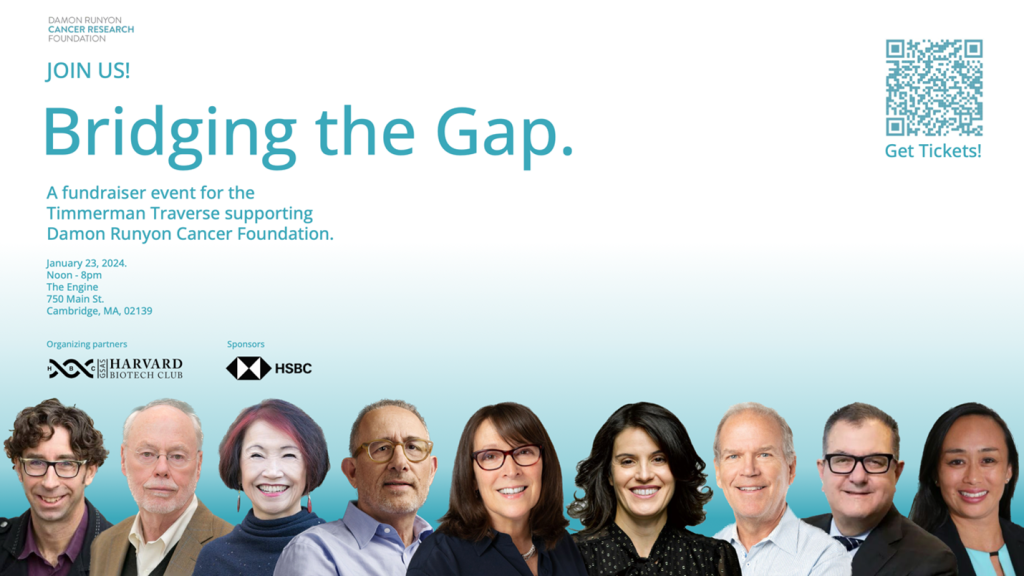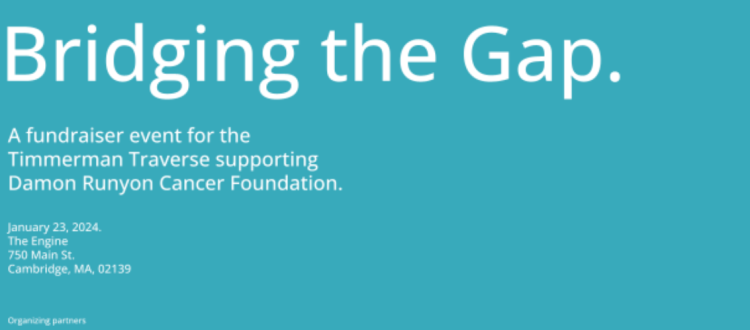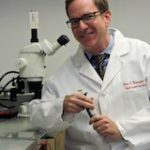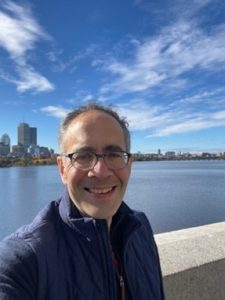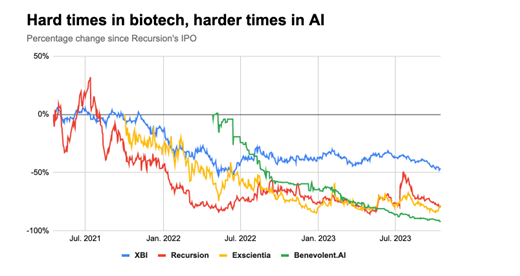Get In-depth Biotech Coverage with Timmerman Report.
4
Dec
2023
Join Me and a Terrific Lineup for ‘Bridging the Gap’ Jan. 23 in Cambridge, Mass.
I’m excited to announce “Bridging the Gap.” It’s an event for the biotech innovation community Jan. 23 in Cambridge, Mass.
An outstanding group of speakers is coming together to support a new generation of scientists through the Damon Runyon Cancer Research Foundation.
- Time: Noon-7 pm
- Date: Jan. 23
- Place: The Engine. 750 Main St., Cambridge, Mass.
Tickets are limited. Buy yours here before they sell out.
Academics: Please apply for a sponsored free ticket here.
PROGRAM
Noon-12:45 pm Registration/networking. Lunch provided.
12:45-1:30 pm. Fireside chat. Supporting the next generation of scientists
Phil Sharp, Institute Professor, MIT; Nobel Laureate
Vicki Sato, Board Chair, Denali Therapeutics, VIR Biotechnology; Former Harvard Business School professor
Luke Timmerman, founder and editor, Timmerman Report (moderator)
1:30-2:10 pm Rising Innovator Flash Talks
Nabiha Saklayen, CEO, Cellino Bio
Omar Abudayyeh and Jonathan Gootenberg, McGovern Institute Fellows, MIT
Ester Calvo Fernandez, PhD candidate, Califano Lab
Basem Al Shayeb, CSO, Amber Bio
2:10-2:40 pm Rising Innovator Q&A moderated by
Ann Dewitt, General Partner, The Engine
2:40-3:10 pm BREAK. Coffee.
3:10-3:15 pm Nucleate Overview
Soufiane Aboulhouda. Co-founder of Nucleate
3:15-4 pm Fireside chat: Venture capital trends
Abbie Celniker, Partner, Third Rock Ventures
David Schenkein, General Partner, GV
Dylan Neel, MD-PhD candidate, Harvard Medical School (moderator)
4-5 pm Enabling Bold Innovation in Oncology
Rosana Kapeller, CEO, Rome Therapeutics
Regina Salvat, principal, Sofinnova Investments
Marcela Maus, Associate Professor of Medicine, Harvard Medical School;
Mass General Cancer Center Director, Cancer Center Program in Cellular Immunotherapy; Paula J. O’Keeffe Endowed Chair in Thoracic Oncology
Yung Lie, CEO, Damon Runyon Cancer Research Foundation (moderator)
5-5:30 pm BREAK. Drinks served.
5:30-6:15 pm Fireside chat: Life Sciences Leadership
John Maraganore, Former CEO, Alnylam Pharmaceuticals; CEO JMM Innovations
Peter Barrett, Partner Legacy Funds, Atlas Venture
6:15 pm. Food served.
6:15-7 pm Tabletop discussions & networking. Nonprofits supporting the community.
- Damon Runyon Cancer Research Foundation
- Nucleate
- Harvard Biotech Club
- Termeer Foundation
- The Engine
- Life Science Cares
- PLUS: Event sponsor HSBC
7-8 pm Open networking
This event is part of the $1 million Timmerman Traverse for Damon Runyon Cancer Research Foundation. A team of more than 20 biotech executives are banding together to raise these funds. We’re also training to hike together to the summit of the highest peak in Africa, Mt. Kilimanjaro, in Feb. 2024.
All ticket proceeds from this event will go to support Soufiane Aboulhouda’s fundraising campaign.
Our mission is to support the next generation of cancer researchers. We are working to provide them the funds — the breathing space, really — to pursue their bold and brave ideas. These are the kind of flexible funds that can propel a young person’s career and advance an entire field of inquiry. Damon Runyon grants support postdoctoral researchers and young faculty at institutions all over the country.
Throughout Damon Runyon’s more than 75-year history, it has supported 13 people who went on to win the Nobel Prize, and 100 who went on to be elected by peers into the National Academy of Sciences.
For more information about Damon Runyon Cancer Research Foundation, and the biotech team working to raise $1 million, Click Here.
This event is being brought to you by the GSAS Harvard Biotech Club. If you have questions, or if your company is interested in sponsoring this event, please contact Soufiane Aboulhouda at bridgingthegapevent@gmail.com.
Thank you for your support.
